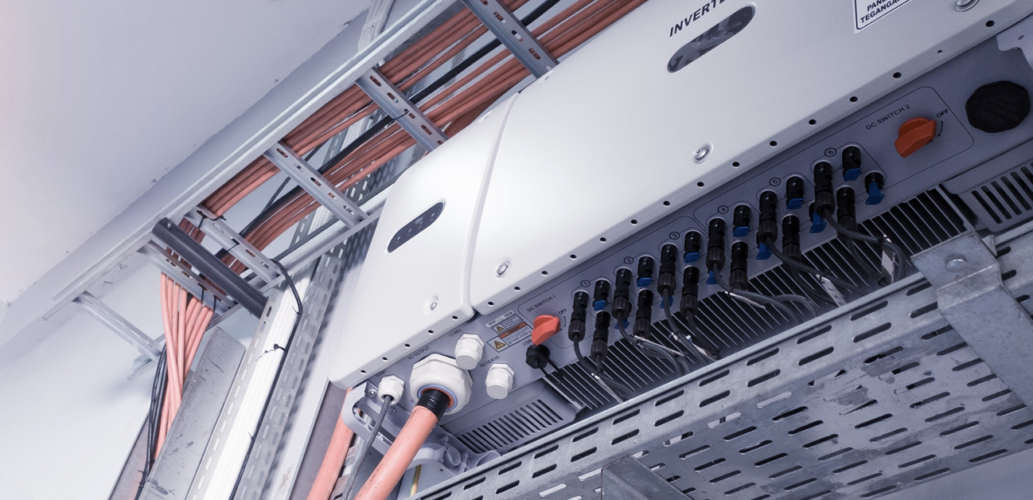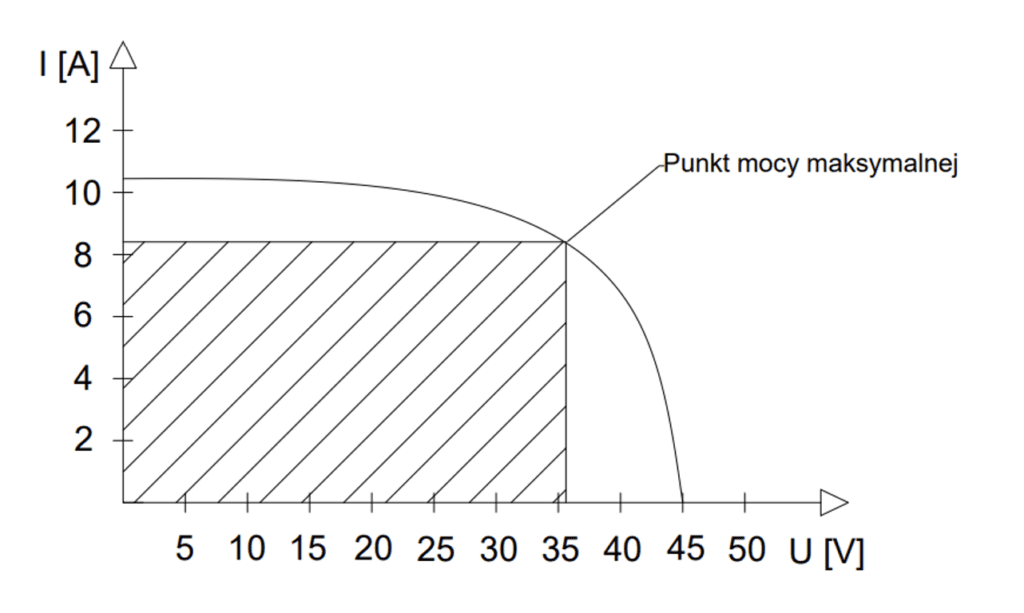How to select a controller for a PV system?
It is probably no longer necessary to convince anyone that, when installed correctly, photovoltaic systems can be a great boon for both the prosumer and the power system itself. An owner of even a small photovoltaic farm generates electricity in a maintenance-free manner, which significantly reduces their electricity bills. Under certain conditions, when combined with energy storage, such a system can be disconnected from the power grid and still provide sufficient energy for their needs. From the point of view of the power grid, electricity generated by photovoltaic panels is free (it is the prosumer who pays for the entire system), and when the sunlight intensity is high, huge amounts of energy ensure more flexible operation of large conventional power plants and at the same time lower greenhouse gas emissions.
- What are solar controllers?
- PV controller types
- PWM controllers
- MPPT controllers
- How to specify the maximum power consumption?
- Selecting a controller for a specific application
Several conditions must be met for a PV system to operate at its maximum capacity. Firstly, panels must be placed in locations that are exposed to sunshine. Any objects, buildings or tall trees in the vicinity of such a system may cast shadows, which results in the reduction of the power generated by a PV system. Obviously, panels should face south, from where most of the sunshine is available throughout the day. The system inclination angle in relation to the sun is also important. A correct set-up ensures the highest possible system performance.
Small PV systems which, for example, when connected to a battery, can charge equipment during a camping trip, have also become very common. They are referred to as off-grid systems, i.e. systems disconnected from the power grid. Just like in their larger counterparts, a correct set-up ensures that the maximum amount of sunlight reaches the panel, so it is up to the user to make the most of their system. Nevertheless, is it all we can do for our generator to take full advantage of the nature’s potential?
Apparently, it is not. Here, solar controller manufacturers can lend a hand by providing equipment that will help us make sure that our PV systems are fully efficient.
What is a solar controller?
In order to explain the operating principle of a solar controller, it is necessary to understand how electricity is actually generated by a photovoltaic system. Solar panel power is described using the following relationship:
where:
P – PV system power [W];
U – voltage [V];
I – current [A].
According to the above formula, power is equal to the product of voltage and current. These values always fluctuate during a day. Therefore, the absence of any intervention aimed at normalisation and averaging of energy generation would result in a very unstable solar power plant operation. Moreover, the total output would not be satisfactory either. What can be done to maintain the current and voltage values at the most optimal level, then? To this end, solar controllers are used.
In line with the diagram below, a PV panel reaches its maximum power when such a voltage and current point is determined that a rectangle of the maximum possible area can be determined under the current curve. Therefore, a controller is designed to make efficient use of radiant energy and reduce the time it takes to charge such a battery by continuously replenishing the current consumed and, in more advanced versions, to track and follow maximum power points so that the system can operate at its full generating capacity. With such a device, it is possible to generate electricity with good efficiency even on cloudy days. It also reduces the need to add more photovoltaic panels to the system.
PWM or MPPT?
There are two PV controller types, i.e. PWM (Pulse Width Modulator) and MPPT (Maximum Power Point Traffic) controllers. They differ in their operating principle, price, performance and (perhaps above all) their ability to operate in various weather conditions. In order to clearly determine whether it makes economic sense to equip a system with a more expensive option, it is worth learning about the advantages and disadvantages of each model and have at least basic understanding of their operating principles.
PWM controllers
The operation of a PWM controller based on pulse width adjustment. Simply speaking, a PWM controller sends short bursts of voltage to a battery to ensure that it is neither overcharged or discharged. It causes no risk of overheating, i.e. battery gassing. Maintaining a constant charge level extends the battery life. The higher the battery charge level, the fewer bursts of energy the controller needs to maintain its specific, constant value.
What are the main advantages of this solution?
- Low price in comparison with the MPPT controllers
- Battery protection against overheating and gassing
- Longer battery life
- Broad assortment of models
- Maximum available power in the shortest possible time
What are the disadvantages of the PWM controllers?
- The input voltage must equalise the battery voltage to ensure correct device operation.
- This is the best solution for systems located in full sunshine, without any shaded areas.
- It generates interferences, in particular at higher current values.
MPPT controllers – advantages and the operating principle
As mentioned above, the MPPT solar controllers are able to track the best power points. The operating principle of the system consists in adjusting the battery voltage in a manner ensuring the maximum charging current. Therefore, in contrast to the PWM controllers, they take advantage of the maximum system potential by exploiting the available sunshine conditions. The great advantage of this solution is its ability to generate electricity under the most favourable conditions of full sunshine, but also during the sunrise, sunset, and cloudy weather. It results from the fact that radiation always reaches the devices, but only a system that is able to adapt to the available sunshine intensity can operate effectively. It turns out that with good-quality MPPT controllers, the generation efficiency can be increased even by 30% in less intensive sunshine conditions. It also reduces the losses occurring during battery charging operations.
Unfortunately, in order to make use of such advantages, the users will have to pay a much higher price. However, the return on investment makes it worthwhile, as correct support for the system brings tangible benefits in the form of electricity that is available to you at any time of day, regardless of whether the sky is cloudless or the sun is hidden high behind the clouds.
To ensure the maximum system performance, solar panels must be connected in series within a system that is equipped with an MPPT controller. Such a system will operate much more effectively than a parallel combination of a larger number of panels in connection with a PWM controller. Note also that the maximum photovoltaic panel voltage specified by the manufacturer must not be exceeded. It would be risky, and, in a worst-case scenario, it could lead to the device failure.
Maximum power point tracking methods
Maximum power point tracking can be based on a few algorithms ensuring various degrees of controller operation accuracy. The following methods are commonly employed:
- Perturbation and observation method, i.e. a trial-and-error method. It consists in making minimal adjustments to the current point position and observing whether it has resulted in an increase or decrease of the charging power. Similar steps should be taken until a satisfactory result is obtained. Note also that the setpoint shift is identical for each successive intervention.
- The incremental conductivity method is an algorithm which, based on the power curve chart, is able to predict the magnitude of a change that ensures the best possible benefits. It is achieved by analysing the increase in intensity and voltage, and in this way determining the impact of the change made.
- Temperature-based method – a temperature measurement is used to determine the maximum operating point. By comparing the result with the reference temperature, the optimum setting can be determined. However, a shadow may cause a problem, as then the temperature-based method becomes flawed.
Selecting a controller to a PV system
Selecting a controller for an existing photovoltaic system requires expertise not only related to the basic parameters of the panels themselves, but also to the technical data of the battery used or the actual power demand. See below for a list of the most important factors determining the correct cooperation of a PV system both with PWM and MPPT controllers:
- PV panel rated power – this parameter should be taken into account so that the system connected to a controller is always able to charge the battery in a suitable time, without compromising the energy storage safety.
- PV panel voltage not exceeding the permissible battery charging voltage and the maximum voltage specified by the controller manufacturer.
- Peak power consumed – a suitably selected controller must have the same or higher charging current to compensate for the current consumption of all connected consumers.
- PV panel short-circuit current – a selected device should have the charging current that is higher than the PV system short-circuit current.
- Energy storage capacity – in order to select a suitable device that will enable us to promptly replenish the energy used, we first need to determine how much energy we can consume, and therefore how large a battery we need. Then the system will be tailored to our specific needs.
Selecting a correct solar controller may improve the system efficiency, which directly translates into economic benefits. Both PWM and MPPT controllers come with certain advantages and disadvantages, and only well thought-out purchasing decisions can ensure that the device meets all user’s needs.
Text prepared by Transfer Multisort Elektronik Sp. z o.o.











